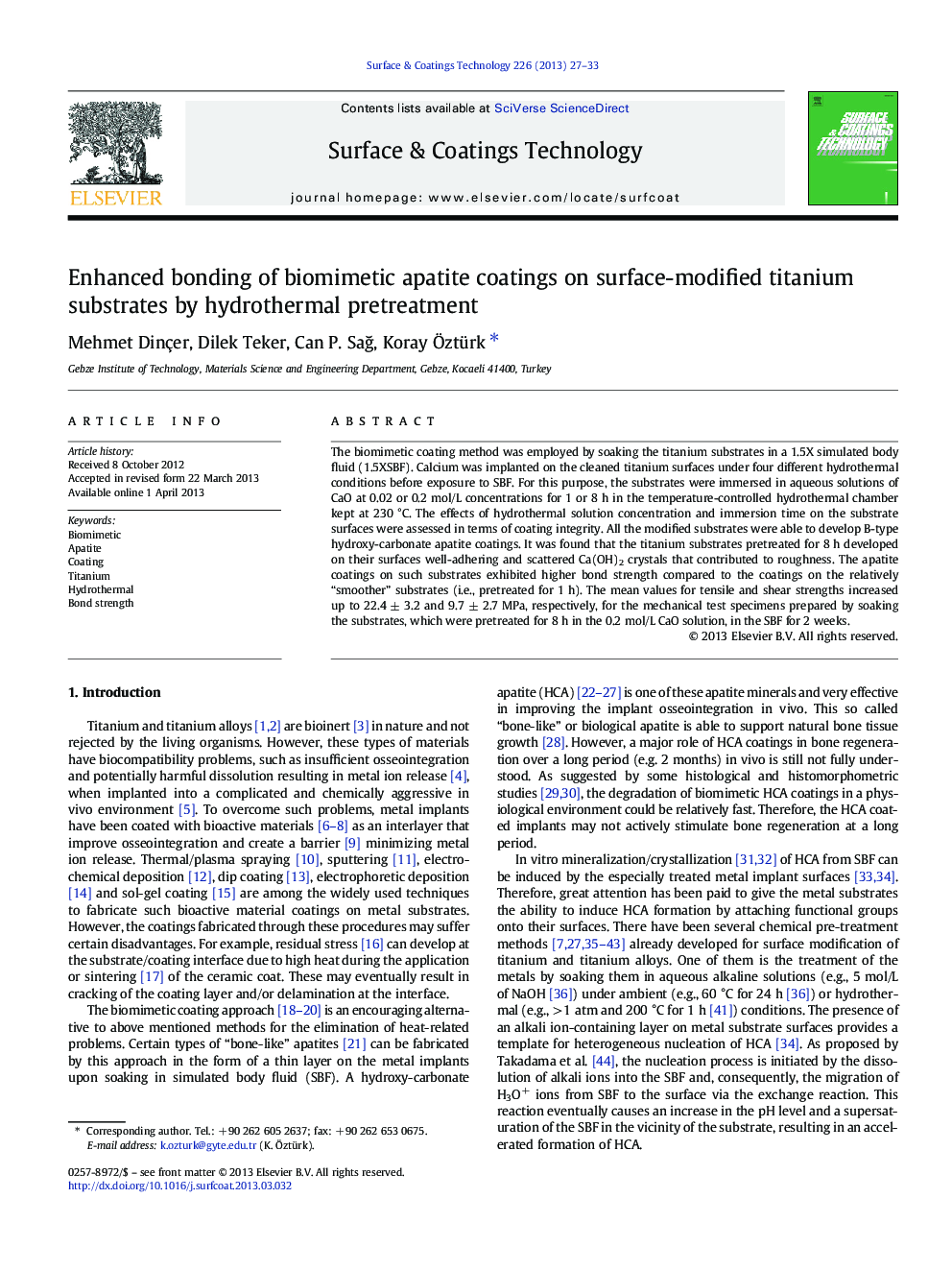| Article ID | Journal | Published Year | Pages | File Type |
|---|---|---|---|---|
| 1658064 | Surface and Coatings Technology | 2013 | 7 Pages |
•Ti substrates were pretreated in aqueous CaO solutions for 1 or 8 h at 230 °C.•The pretreated substrates were soaked in 1.5XSBF to form apatite (HCA) coatings.•The substrates pretreated for 8 h developed micron-sized Ca(OH)2 crystals.•The coatings formed on such substrates exhibited high bond strength values.•Tensile and shear bond strengths increased up to 22.4 and 9.7 MPa, respectively.
The biomimetic coating method was employed by soaking the titanium substrates in a 1.5X simulated body fluid (1.5XSBF). Calcium was implanted on the cleaned titanium surfaces under four different hydrothermal conditions before exposure to SBF. For this purpose, the substrates were immersed in aqueous solutions of CaO at 0.02 or 0.2 mol/L concentrations for 1 or 8 h in the temperature-controlled hydrothermal chamber kept at 230 °C. The effects of hydrothermal solution concentration and immersion time on the substrate surfaces were assessed in terms of coating integrity. All the modified substrates were able to develop B-type hydroxy-carbonate apatite coatings. It was found that the titanium substrates pretreated for 8 h developed on their surfaces well-adhering and scattered Ca(OH)2 crystals that contributed to roughness. The apatite coatings on such substrates exhibited higher bond strength compared to the coatings on the relatively “smoother” substrates (i.e., pretreated for 1 h). The mean values for tensile and shear strengths increased up to 22.4 ± 3.2 and 9.7 ± 2.7 MPa, respectively, for the mechanical test specimens prepared by soaking the substrates, which were pretreated for 8 h in the 0.2 mol/L CaO solution, in the SBF for 2 weeks.
